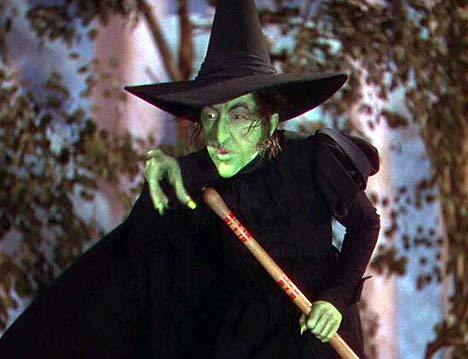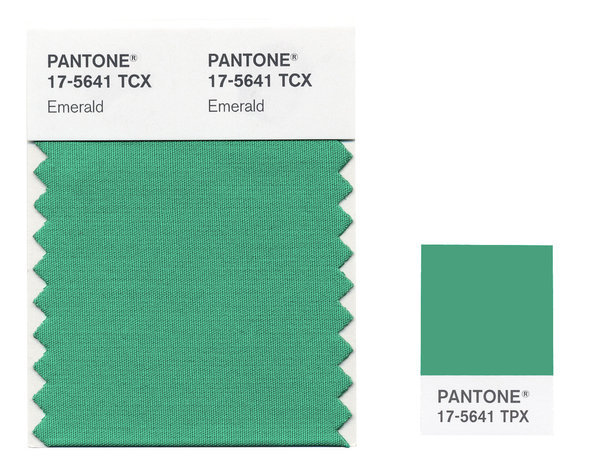It is Christmas at King Arthur’s court, and everyone is rejoicing. For two full weeks there has been feasting by day and dancing by night, with all the knights and ladies whirling and stamping through the great halls of Camelot to keep out the cold. Grey-eyed Queen Guinevere sits at the dais next to her husband, under a canopy of rich red Tolouse cloth. Fires flicker in the hearths as course after course is carried to the table to the sound of trumpets. Suddenly, the hall door bursts open, and a
half etayn - ‘half giant’ - of a man rides in on a horse of equal stature, rudely rupturing the elegant, civilised atmosphere with his size, his unconventional method of entry, and his general wildness. After describing his height, the girth of his limbs, and his massive - though well-proportioned - physique, the story saves its most remarkable detail until the end: he is
oueral enker-grene, ‘entirely bright green’.
The wonderful medieval poem
Sir Gawain and the Green Knight was one of the things which first made me fascinated by the colour green. It was written in the late fourteenth century by an unknown poet somewhere
in the English Midlands, and has survived only in a single, crudely illuminated manuscript.* Telling the story of a mysterious green knight who shows up at Camelot one Christmas and challenges Arthur's nephew, Sir Gawain, to a beheading game (the rules: I'll give you my axe and you can chop off my head, then in a year's time you can come and find me and I'll chop off your head), this poem has everything you'd want in an Arthurian adventure: a perilous journey through a frozen wilderness filled with
wormez, wolues, wodwos, bullez and beres and borez ('dragons, wolves, wild woodmen, bulls and bears and boars'); a shimmering castle in the forest, white and illusory as a paper cut-out; a seductively beautiful hostess who offers to save the hero but may not be all she seems; all told in richly alliterative verse shot through with jewel-like visual details. Most striking of all is the unearthly green knight himself: it is never made entirely clear whether he is a benign or malevolent figure. At the end of the poem, his final destination remains a mystery; we are simply told that
þe knȝht in þe enker-grene ('the knight in the bright green') rode off
whiderwarde so-euer he wolde ('to whatever place he wished').**
 |
| The Green Knight and Sir Gawain (holding the axe); King Arthur and Queen
Guinevere (in green) are on the balcony. The opening lines of the poem
can be seen on the right-hand page. British Library MS Cotton Nero, ff.
41v-42r. |
In the European Middle Ages, colour symbolism was both widespread and unfixed, with complex colour codes and associations existing in areas such as heraldry and Christianity. However, green enjoyed a particularly wide, and frequently contradictory, spectrum of meanings, from youth, new life and faith to the supernatural, death and decay. The greenness of the green knight can therefore be used by the poet as a visual puzzle, keeping all these different meanings in play: is this monstrously huge
half etayn a wild green man of the woods, of the kind found in this manuscript image?
 |
| A knight kills a wild man abducting a woman, in the Smithfield Decretals. British Library MS Royal 10 E 4, f. 47v (c. 1340). |
Or do his elegant clothes of
clene verdure, 'pure verdant green', mark him out as a noble lord from an unknown court? The poet spends a long time describing his extravagantly decorative clothing:
Þat were to tor for to telle of tryfles þe halue
Þat were enbrauded abof, wyth bryddes and flyȝes,
With gay gaudi of grene, þe golde ay imyddes...
Þe steropes þat he stod on stayned of þe same,
And his arsounz al after and his aþel skyrtes,
Þat euer glemered and glent al of grene stones...
[It would take too long to describe half of the details
that were embroidered there - birds and butterflies,
with bright green ornamentation, mingled with gold...
The stirrups that he stood upon were coloured in the same way,
and the saddle-bows as well, and his noble skirts,
which constantly glimmered and glinted with green jewels...]
Does his unnatural green skin, the colourwheel opposite of any human skin tone, signify a supernatural, deathly or even devilish figure (significantly, the devil in Chaucer's Friar's Tale wears a
courtepy of grene, 'cloak of green')? Or can his greenness rather be associated with rebirth and new life, suitable for a creature capable of surviving a beheading and replacing his head on his own shoulders? When he rides into Camelot, we are told that the green knight carries
an ax...hoge and vnmete, 'an axe, huge and monstrous', in one hand, and in the other
a holyn bobbe, þat is grattest in grene when greues ar bare, 'a bob of holly, that is most green when the woods are bare'; these twin symbols of death and life thoroughly disrupt both the orderly Christmas festivities at Camelot and any fixed perceptions the audience might have.
The poet was evidently an extremely visual thinker, as the lines quoted above indicate, and greenness can be found woven throughout the poem, above all in the snakish green silk girdle offered to Gawain by his hostess to protect him against the green knight's axe-blow. Red, the complementary colour of green, is also found in large quantities, and frequently seems to be used as the colour of safety and certainty
in contrast to the unknowable, disconcerting green of the green knight. It is seen in Gawain's rich red surcoat and his shield of
schyr gules, 'bright gules' (the heraldic term for red), where red is used almost as an opposing 'team colour' against his bright green adversary; in the fox-brown beard of Gawain's host; in fires, sunrises, and blushing red faces.
If you haven't read this poem, do! There's a fantastic
modern English translation by Simon Armitage, which preserves the alliterative verse form of the original (and is the only modern translation of a medieval poem I've read which works as a poem in its own right). There's also
an edition of the original with a facing-page translation by J. R. R. Barron. The entire Cotton Nero manuscript has recently been digitised by the University of Calgary and can be found online
here.
* The capricious nature of the survival of medieval manuscripts always
terrifies me: what if this one manuscript had been thrown away,
burnt in a library fire,
used as stiffening material for a bishop's mitre,
or chopped up for its pictures by John Ruskin (the Victorian art critic
took a somewhat cavalier approach to medieval manuscripts; his diary
entry for 3 January 1853 notes 'cut up missal in evening - hard work')?
** The letters þ (thorn) and
ȝ (yogh), which fell out of use in English shortly after the arrival of printing (the printers' fonts imported from continental Europe didn't contain the letters), are respectively pronounced 'th' and 'gh'/like the 'ch' in 'loch'.







